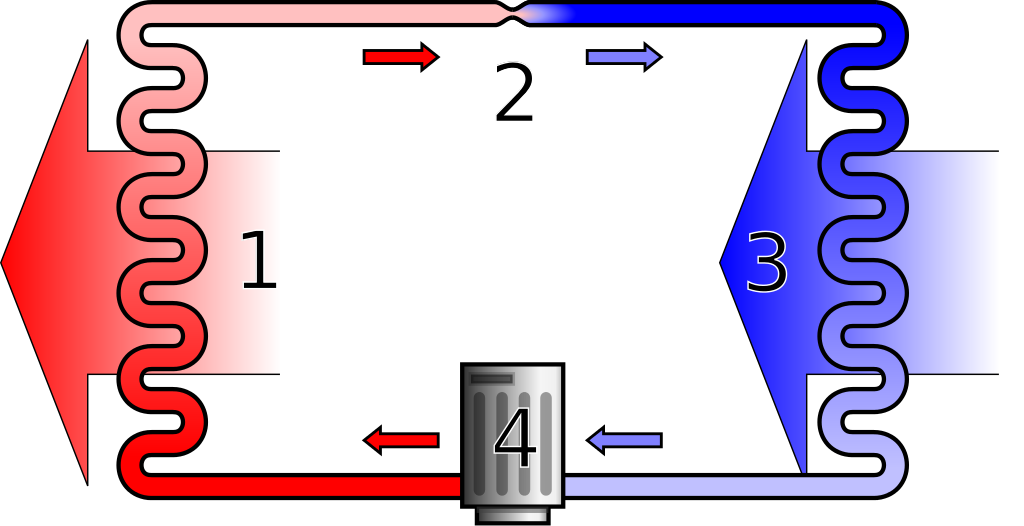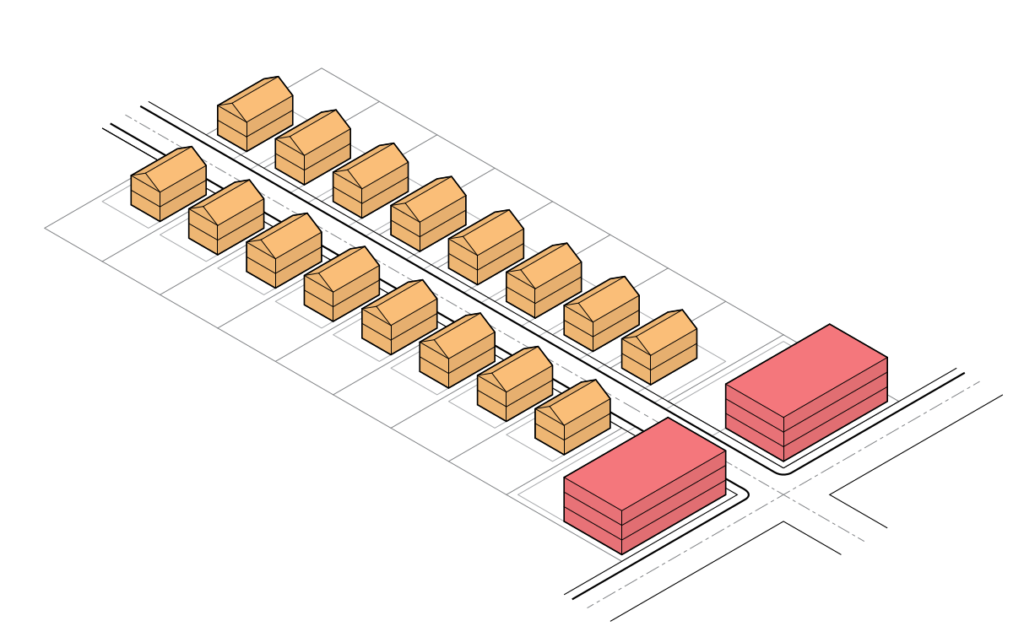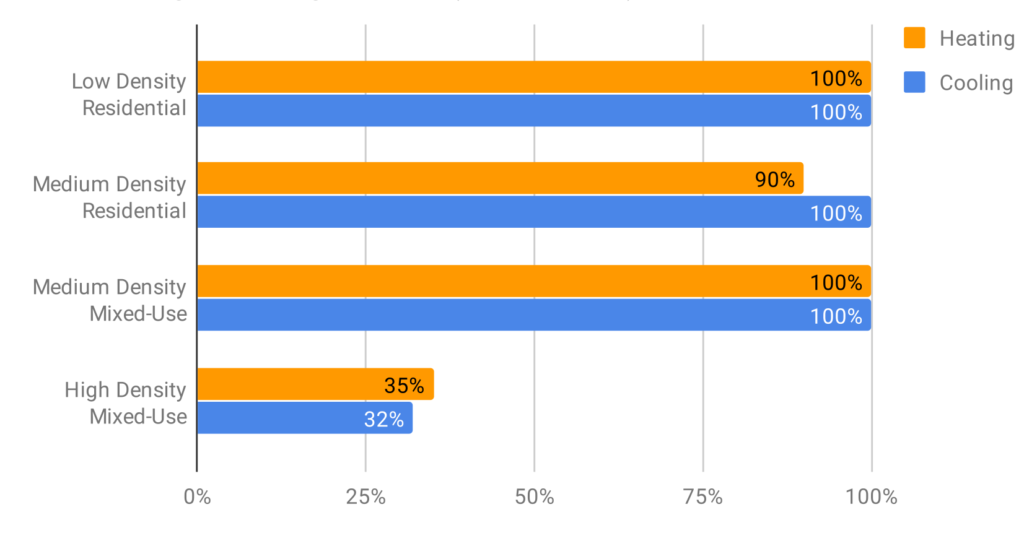– JT H. & Steve S.
In September of 2018, workers replacing low pressure gas mains neglected to move a pressure sensor to the newly installed pipe. This critical step was not included in the work procedure set by Columbia gas. As a result, high pressure natural gas ripped into local mains, setting fire to 40 homes, and killing one resident.
High profile disasters like the Merrimack Valley gas explosions are leading to increased skepticism about the safety of natural gas distribution systems. The number of leaks in the Greater Boston area should also be cause for alarm. Some of these have been open for decades. On top of this, gas and other fossil fuel fired home heating and cooling accounts for 60% of a building’s annual carbon emissions, so it should come as no surprise that some forward-thinking municipalities have been searching for alternatives to fossil fuel heating systems. Even those homes that are heated by different types of oil such as propane or kerosene may need to switch to alternatives very soon, which could mean that oil tank abandonment may become a phenomena that needs to be tackled. Getting rid of unused and old oil tanks safely should be a priority, as this process should not cause further damage to the environment or to the people around.
That being said, it is unlikely that fossil fuels will ever be totally fazed out. At least for the next few years. However, it is no secret that homeowners do have more choices than ever before. For example, if your home is powered by oil, you can take a look at some of the different packages offered by suppliers such as Romeo’s Fuel or other local fuel merchants in your area. Some fuel suppliers offer oil at surprisingly affordable rates so do be sure to compare options if you are considering switching oil supplier.
Electrification of heating and transportation has been proceeding at a rapid rate. Brookline, Massachusetts, recently banned natural gas hookups in new construction, prompting a swift backlash in the comments sections of local news sites: “don’t you know how much electric heating costs???” Gas workers belonging to local unions also oppose electrification in the context of job security. Well, concerned citizens need not fear-there is a clean, safe, and economical alternative to fossil fuel heating: the heat pump.
What is a Heat Pump?
A heat pump is kind of like an air conditioner running in reverse. But it also can work as a regular air conditioner. That’s right, a heat pump can also be used for both heating and cooling, allowing one system to take care of year-round home climate comfort. Unlike oil or gas (or coal or wood) heating, heat pumps require no combustible fuel to operate, thereby reducing the cost and greenhouse gas emissions of home heating — and the risk of other nasty consequences like gas leaks or explosions. Heat pumps require only electricity as an input, and use less of it to heat your home than conventional resistive heating, as in a space heater. What is however important here is to get in touch with the reliable heat pump suppliers who can provide good quality products.
The heat pump is a clean, powerful, and efficient alternative to conventional heating systems. A heat pump system moves heat from one location to another. Most practically, this is from outside of your house to inside of your house. A ground source heat pump pulls this heat from underground, where temperatures are relatively stable year round. A network of pipes circulates water at warm subterranean temperatures to the heat pump.

But wait! Ground temperatures can’t be that warm, right? Certainly not warm enough to heat a home. Like an air conditioner or refrigerator, the heat pump runs off a form of the refrigeration cycle, which takes advantage of the properties of phase-change fluids to move heat from one area to another.
The heat pump itself is made up of four parts: evaporator, compressor, condenser, and Valves that expands (in short, an expansion valve). These make up a second system of pipes that a refrigerant fluid flows through. We can imagine this fluid beginning at the evaporator, which is put next to the water pipes. The evaporator uses heat from the water to change the refrigerant, which has a very low boiling temperature, from a liquid to a gas. After the evaporator, the refrigerant gas moves into the compressor. This pressurizes the fluid, increasing the temperature of the fluid substantially. Next, the refrigerant enters the condenser. The compressor has increased the temperature of the refrigerant to be above the air in your home. As heat transfers from the fluid to the home, the high pressure gas loses heat and transitions back into a liquid. Finally, the expansion valve reduces the pressure of the fluid, lowering the boiling point to be colder than the below-ground temperature so that the cycle can begin again.
Heat pumps can be even more effective when connected into networks. HEET Massachusetts (Home Energy Efficiency Team), an energy and climate advocacy group, is piloting a program to build a heat pump network that will serve a single-block area. They call it a GeoMicroDistrict.
GeoMicroDistricts
The GeoMicroDistrict concept is made up of a group of buildings that share heat pump infrastructure. A single loop of groundwater pipes will serve every building in the district, each of which will connect to the ground loop with its own heat pump. The GeoMicroDistrict allows heat pumps to overcome one of their most fundamental limitations: load balancing. In order to keep ground temperatures stable, heat pumps must put back the same amount of heat as they take in over the course of a year. This is no issue if buildings use the same amount of heating power in the winter as cooling power in the summer… but they don’t. Not in Massachusetts, anyway. Homes tend to use more heating, while commercial and retail spaces use more cooling. The GeoMicroDistrict allows homes to be tied in with retail businesses at the end of the street, offsetting each other’s loads. The bigger the network, the bigger the balancing advantages. The GeoMicroDistrict also leverages economies of scale to lower costs for everyone tapping into it.

A mixed-use micro district. Source: HEET, BuroHappold
To validate their concept, HEET and BuroHappold Engineering performed a feasibility study. This study estimated the performance of various heat pump systems in four types of GeoMicroDistrict. The most effective heat pump configuration was able to meet nearly all of the heating and cooling needs of three out of four of these district segments, drawing on only thermal energy from the ground beneath them. In the high density mixed use case the demand for heating and cooling was too great to be fully met by a system drawing only on ground heat from its own footprint.

GeoMicroDistrict Cost Savings
One of the strongest forces pushing against the adoption of electric heating is its cost. While heat pump systems are significantly more energy efficient than conventional electric heating, they come with a pretty hefty installation cost. The price tag on the construction of a GeoMicroDistrict is hard to estimate, as it will vary on factors ranging from the geological makeup of the ground at each site to labor costs for installation to the economics of scale, depending on the size of the project. However, there are a few examples of district-scale heat pump systems active in the US, and the economics are promising. In 1994, New Jersey’s Stockton University built a vertical ground-coupled heat pump system to provide heat to its campus.
The project cost about $5 million, but at $400,000 estimated savings each year it paid itself off in short order, as well as greatly reducing the college’s overall energy use and greenhouse gas emissions. Several other college campuses and small municipalities have had success with interconnected heat pump systems. More information on these can be found in Appendix B of the BuroHappold report.
The GeoMicroDistrict Project: Next Steps
HEET is working with Eversource to build three GeoMicroDistrict pilot locations in Massachusetts. The Massachusetts state senate recently approved an amendment to its 2020 climate package allowing for thermal energy pilot projects.
The FUTURE ACT (Incentivizing Clean Thermal Energy Sources)
Since 1997 the state legislature in Massachusetts has required electricity utilities to gradually increase their reliance on renewable energy sources through Renewable Portfolio Standards (RPS). Massachusetts is one of 29 states to use the RPS process. Roughly half of the growth in US renewable generation and capacity since 2000 can be attributed to the implementation of these standards. Unfortunately, there is not a proper analogue for gas utilities. Thermal generation continues to be sourced from dirty fossil fuel sources such as natural gas and oil. The FUTURE (For a Utility Transition to Using Renewable Energy) Act (H.2849, S.1940) is a bill currently in the Massachusetts state house and senate that addresses this deficiency.
Specifically, this bill amends several sections of the Massachusetts General Laws, specifically statutes related to the management and regulation of utilities. Local authorities may already use Utility Management Software to help them with things like billing, but this act broadens the enforcement of safety standards, energy efficiency goals, carbon emission reductions to include gas utilities. Furthermore, it includes language around the timely fixing of leaks and the power of municipalities to claim property damage from utilities related to leaks.
This is particularly important for Massachusetts, which has the second oldest gas infrastructure in the country, meaning it is particularly susceptible to leaks and explosions. In 2017, there were 27,731 leaks reported, with 15,829 still unrepaired at year’s end. Over $9 billion dollars have been committed to replacing old pipes with new ones.
One of the key elements of the FUTURE act is to decouple gas utilities (in line with electricity utilities, as per D.P.U. 07-50-A). Decoupling is a term used to describe the separation (or decoupling) of profit and consumption. In the current coupled system, gas utilities make money for every Therm sold to every customer. This strongly disincentivizes them from working towards any sort of energy reduction goals. In a decoupled system, their overall profits would be fixed by the Department of Public Utilities, leading gas utilities to beat the very least agnostic towards customer’s consumption and thus would prevent them from disincentivizing customer’s “converting to use of heat pumps, solar thermal, or other heating or cooling technologies using renewable sources of energy that do not emit greenhouse gases”. For more information on decoupling, the NRDC has a great explanation.
Particularly relevant to the feasibility of GeoMicroDistricts is the FUTURE acts requirement that rate decisions incentivize the replacement of natural gas infrastructure with district energy infrastructure (a GeoMicroDistrict is a form of district energy infrastructure). In addition to the positive results from the GeoMicroDistrict assessment mentioned previously, Denmark heats over 60% of its building with district energy and has cut its greenhouse gas emissions per person in half over the last 20 years. Furthermore, the FUTURE act sets deadlines that all heating oil customers in Massachusetts be converted to renewable thermal energy technologies by December 31, 2030, and that all other customers of fossil fuel energy sources be converted by December 31, 2048.
Overall, the FUTURE act creates a roadmap for thermal utilities to transition to cleaner, less explosive thermal sources in a similar manner to the current requirements on electric utilities. It will make our communities safer, cleaner, and better suited to confront our global climate crisis. Furthermore, this act incentivizes community-based energy infrastructure such as the GeoMicroDistricts, ensuring that future energy is not only clean, but democratically run and shared for the benefit of all.
Additional information about the FUTURE act can be found here.
The Case for a Publicly Owned Geothermal Utility
The cancellation of Columbia Gas’ license to operate in MA creates an opening for a publicly owned geothermal utility. More specifically, the political situation in Merrimack Valley is ripe for a public takeover of a gas utility at the time of writing. Unfortunately, within less than 24 hours of Columbia Gas’ federal conviction, Eversource bought Columbia Gas’ grid infrastructure in MA for $1.1 billion. However, climate activists and community organizers should pressure Eversource to pilot a GeoMicroDistrict in Merrimack Valley, especially since luxury condos in Lawrence boasts providing geothermal heating, thus highlighting the environmental injustice to those who had suffered most at the hands of Columbia Gas.